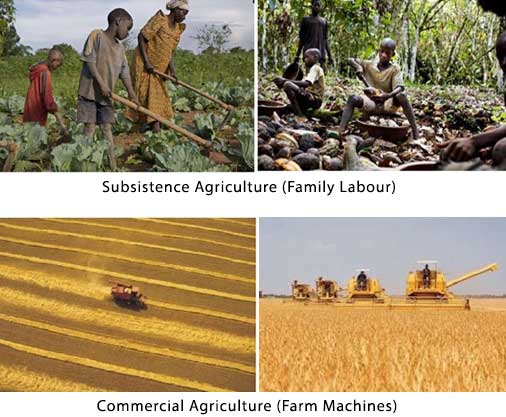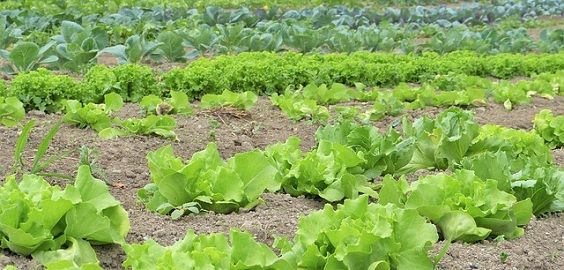An In-Depth Consider the Obstacles and Advantages of Modern Agriculture
Modern farming stands at the crossroads of innovation and sustainability, providing a multitude of possibilities and difficulties. With improvements like accuracy farming and biotechnology appealing boosted performance, the industry simultaneously comes to grips with vital concerns such as environmental degradation and socio-economic variations. As we explore the elaborate equilibrium between technical progression and its broader impacts, the question arises: can we attain a lasting future that benefits both the atmosphere and farming neighborhoods? The path forward requires a cautious exam of these characteristics, inviting stakeholders to think about the potential for transformative change in farming techniques and policies.
Technical Developments in Farming
Developments such as accuracy biotechnology, automation, and farming have actually changed standard farming techniques, allowing for more sustainable and successful procedures. Precision farming utilizes GPS technology, sensors, and information analytics to optimize field-level administration pertaining to plant farming.
Automation in farming has actually further pushed the sector forward, with the introduction of self-governing tractors, drones, and robotics. These modern technologies minimize labor requirements and increase operational rate, permitting timely planting and harvesting. Drones, specifically, supply useful airborne images and information, helping farmers in monitoring crop health and discovering problems early.
Biotechnology has actually likewise played a critical role ahead of time agricultural methods. Genetically customized organisms (GMOs) have actually been created to enhance crop resistance to diseases and parasites, lower dependence on chemical therapies, and improve nutritional content. This modern technology adds to food protection and satisfies the demands of a growing global populace. Jointly, these technical developments have laid the foundation for a more resistant and lasting farming future.
Environmental Obstacles
Farming faces a number of environmental obstacles that threaten its sustainability and efficiency. The long-term feasibility of farming land is endangered, necessitating the fostering of even more lasting practices.
Water shortage is one more substantial challenge, especially in regions where farming greatly relies upon irrigation. Climate modification is magnifying this problem, modifying precipitation patterns and enhancing the regularity of dry spells. Reliable water monitoring systems, such as drip watering and rain harvesting, are crucial to reduce these impacts, however their application remains unequal across different regions.
In addition, farming is both a factor and a victim to environment modification. Dealing with these ecological difficulties is vital for making certain a lasting agricultural future.

Economic Influences
The financial impacts of contemporary agriculture are profound and diverse, influencing both local and international markets. Breakthroughs in technology and manufacturing methods have actually significantly increased farming performance, bring about much more efficient food supply chains and minimized costs for customers. This heightened performance has actually allowed countries to satisfy expanding demands, maintain food prices, and add to economic development. In addition, the export of agricultural assets has ended up being a substantial source of revenue for many countries, playing an important function in their financial advancement.
However, these advantages are not without challenges. The capital-intensive nature of modern agriculture needs significant financial investment in equipment, plant foods, and genetically modified seeds, which can be monetarily troublesome for small farmers. This typically causes raised financial obligation and economic vulnerability, potentially resulting in the combination of farms and the loss of this page country incomes. In addition, international market variations can influence the profitability of farming exports, making economic situations reliant on agriculture prone to financial instability.
Additionally, subsidies and trade plans in established countries can distort market prices, impacting affordable balance and possibly disadvantaging farmers in establishing nations. Generally, while modern-day farming drives financial development, it likewise demands navigating intricate economic landscapes to make sure sustainable and equitable advancement.
Social Effects
While modern-day agriculture has actually produced considerable developments, it likewise presents various social implications that call for consideration. One major concern is the variation of small-scale farmers because of the rise of large agribusinesses. As business farming entities significantly dominate the farming landscape, smaller ranches frequently battle to compete, resulting in the disintegration of rural communities and conventional farming techniques. This change can lead to a loss of neighborhood understanding and cultural heritage that smaller ranches sustain.

Such methods may also restrict consumer selections and minimize the capability of local communities to control their food resources. As these social implications unfold, it ends up being essential to resolve them to guarantee fair and lasting agricultural advancement.
Future Directions
Looking ahead, numerous encouraging methods for modern-day farming might deal with the difficulties dealt with today while promoting lasting growth. Breakthroughs in innovation, such as precision agriculture, use the potential to maximize source usage and boost effectiveness. By using data analytics and device understanding, farmers can make informed choices concerning crop monitoring, causing reduced input prices and decreased ecological impact. The integration of eco-friendly power resources right into agricultural techniques might significantly decrease dependency on fossil gas and add to lower greenhouse gas emissions.
Biotechnology likewise holds enormous pledge for the future of farming. Genetically customized microorganisms (GMOs) and gene editing techniques, like CRISPR, could boost plant durability versus environment modification, parasites, and illness, therefore boosting food safety. Branching out plant ranges to include even more climate-resilient and nutrient-dense choices could reinforce both ecological security and human nourishment.

Final Thought
Modern farming, defined by technological innovations, provides both possibilities and obstacles. While developments such as accuracy farming and biotechnology click over here boost efficiency and sustainability, they also add to ecological issues like dirt deterioration and water shortage. The financial effects are significant, influencing small farmers and leading to more comprehensive social ramifications. Dealing with these intricacies requires a change towards lasting methods that balance productivity with ecological stewardship and social equity, consequently guaranteeing a resilient future for international agricultural systems.
Modern agriculture stands at the crossroads of development and sustainability, offering a multitude of difficulties and possibilities. In addition, global market variations can impact the productivity of agricultural exports, making economic climates reliant on farming susceptible to economic instability.
Additionally, the extensive usage of innovation and automation in agriculture has actually led to a decline in agricultural employment chances.Looking in advance, numerous encouraging avenues for contemporary farming can resolve the challenges faced today while fostering sustainable growth. commercial farming vs subsistence farming.Modern agriculture, defined by technical advancements, presents both opportunities and difficulties